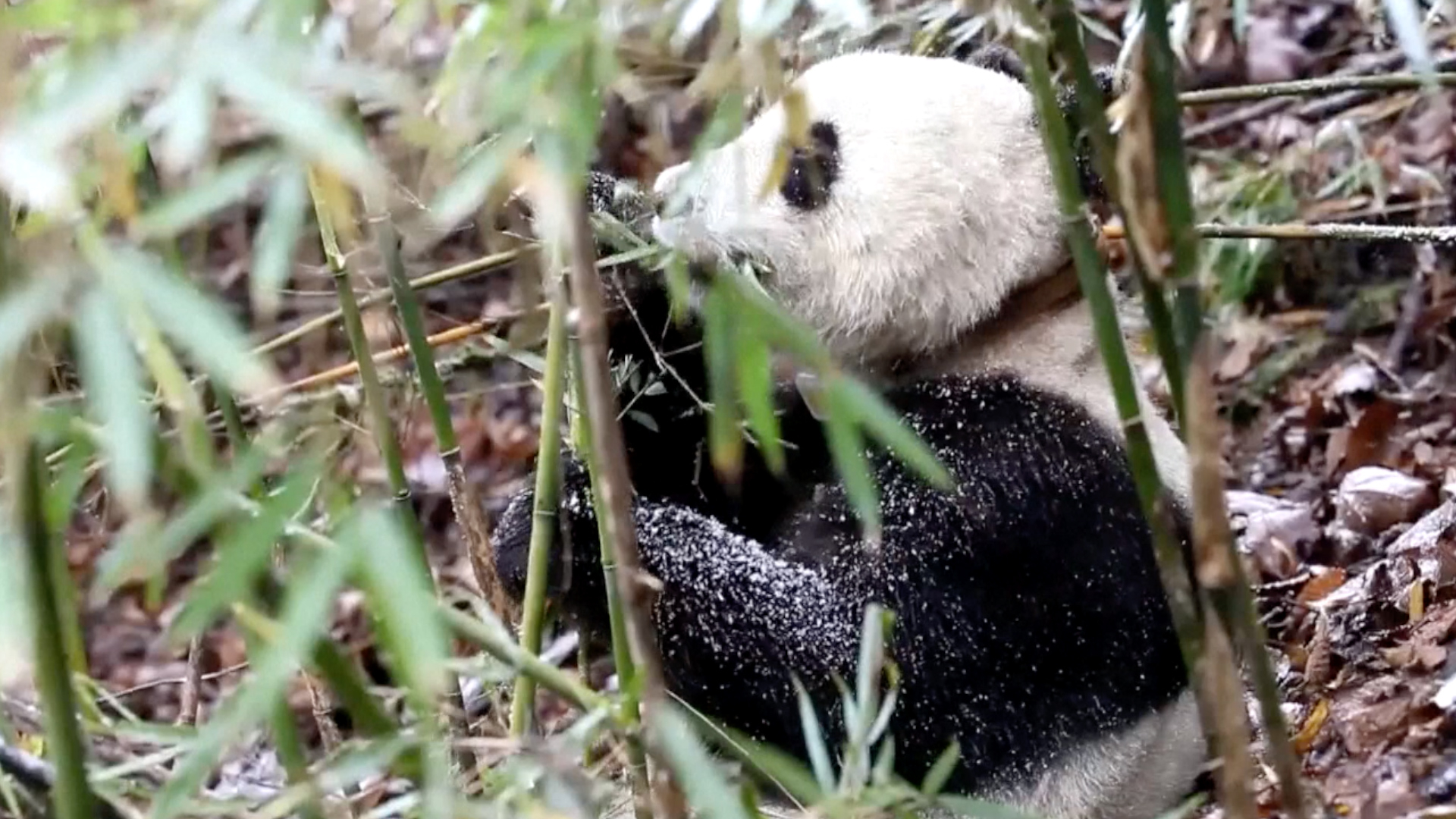01:00

China Conservation and Research Center for Giant Panda announced that three giant pandas will be released to a nature reserve located in east China's Jiangxi Province, as an important step in the animal's reintroduction research.
The reintroduction of giant pandas refers to the release of captive-bred giant pandas into the historical distribution area after wild training so that they can rebuild their wild populations there. In 2003, the research center began training and releasing captive pandas. So far, 11 pandas have been released.
"Throughout history, giant pandas were once distributed in 17 provinces, cities, and autonomous regions in China. Our captive giant panda population has recovered so well and can nurture the wild population. So we consider that we should not only release pandas to the wild but also pay attention to the reintroduction of wild populations," said Zhang Hemin, deputy head of the China Conservation and Research Center for Giant Pandas.
This is the first time pandas are released outside their hometown of Sichuan Province. The three giant pandas participating in this re-introduction experiment are male "Yun'er" and two females "Pan Wang" and "Ran Ran." At present, they have completed training and are ready for reintroduction.
"The three giant pandas have achieved the expected goals in our wild training, and passed the scientific certification of experts, which means they are basically qualified for release into the wild," said Wu Daifu, head of the Hetaoping training base of the China Conservation and Research Center for Giant Pandas.
The three giant pandas will be released in the Guanshan National Nature Reserve in Jiangxi. The forest coverage in the reserve is over 98 percent, and the climate is suitable for giant pandas. According to experts, the rich variety of bamboos is a rich source of food, and there are also abundant water resources and woods.
"The water is natural, it meets human drinking standards. There are also good places for hiding, especially for giant pandas. There are trees they can climb and escape the heat. As we can see, this area meets their needs," said Tu Xiaobin, director of Jiangxi Wild Animal and Plant Protection Bureau.
(Cover image via VCG.)
(If you want to contribute and have specific expertise, please contact us at nature@cgtn.com.)